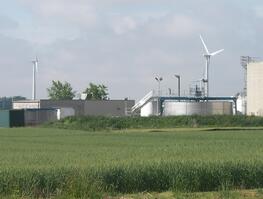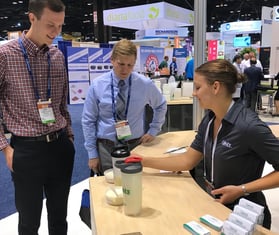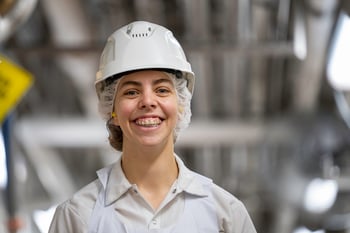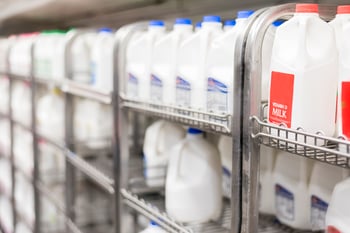As a company that strives to be a responsible corporate leader, social responsibility is fundamental to Grande®’s culture and core values. Being a principle we believe in and embrace, social responsibility reflects in the commitments we make to our Associates, Producers, customers, and communities. Throughout this 4-part blog series, we’ll give you an inside look at the steps Grande is taking to help positively impact the world around us!
 After giving you an inside look at the different ways we support our Associates in Part 2 of our blog series, now we’re shifting the focus towards our commitment to protecting the environment. As a part of being a socially responsible business, Grande diligently works to protect the land, water, and air in the communities in which we operate. By working together with our producer dairies and suppliers, Grande is dedicated to implementing management practices designed not only to protect, but also improve, the environmental conditions in and around their farms – in addition to our own facilities.
After giving you an inside look at the different ways we support our Associates in Part 2 of our blog series, now we’re shifting the focus towards our commitment to protecting the environment. As a part of being a socially responsible business, Grande diligently works to protect the land, water, and air in the communities in which we operate. By working together with our producer dairies and suppliers, Grande is dedicated to implementing management practices designed not only to protect, but also improve, the environmental conditions in and around their farms – in addition to our own facilities.
Water Conservation
Grande’s philosophy about water conservation revolves around developing new processes and capital replacement items. For example, Grande used 259.4 million gallons of water in 2011. To help lower the environmental impact, however, we were able to reuse 25.9 million gallons (10%) at several of our locations for activities such as cleaning, ammonia compressor cooling, and feeding the boiler. An air compressor replacement and condensate recovery project also helped us save 2.3 million gallons (1.9%) of water in 2011. To help us identify major water uses and highlight economically practical water usage reduction projects, Grande completes annual water benchmarking tests at each facility.
Waste Water Management
When it comes to the Wisconsin Department of Natural Resources (DNR) and Environmental Protection Agency (EPA) industry regulations, Grande doesn’t just meet the requirements; we consistently go above and beyond to do the right thing. Take this project for example:
In 2011, Grande generated 65.3 million gallons of High Strength Waste (HSW). With the DNR reducing land spreading limits over the years, a common waste disposal method, Grande decided to pursue an innovative solution. The result? A high strength wastewater anaerobic digester treatment system that not only allowed us to dispose of waste in an environmentally friendly way, it also produces biogas, which can be used to offset the energy demand within the production plant. In fact, with the anaerobic digester running at full capacity in 2012, we flared off 266,866 therms of methane – enough to replace 16% of the energy used at the Brownsville plant.
Energy Conservation
Starting in 2008, Grande began benchmarking and tracking energy use as a result of our conservation and efficiency improvement efforts. We met with consultants, conducted an energy study at our Brownsville plant, and implemented a wave of improvements as resources became available. Since 2008, our energy conservation projects have provided ongoing savings of over 500,000 therms of gas and 3 million kilowatt-hours per year. The chart below highlights these savings:

Zero Waste Discharge
At Grande, we strive to put as little waste into landfills as possible. In an effort to help reduce the levels of our landfill waste, every Grande facility recycles all major items, including scrap metals and plastics. In addition, smaller recyclable items (e.g. cardboard, paper, plastic, wood, etc.) are gathered at each facility, aggregated at our Rolling Meadows facility, and delivered to a local recycling center.
In 2012, Grande generated 1,179 tons of solid waste. Of that, 347 tons (29%) were recycled, with the rest going to landfills. After tracking the collection of small volume items in 2012, we collected 59.4 tons, or 17% of the 347-ton total, from our additional small volume recycling efforts.
Biodiversity
Due to mankind’s negative industrial effect on the world, it is estimated that the current species extinction rate is between 1,000-10,000 times higher than it would be naturally. In an effort to help offset the effects of converting natural habitats to farming and urban development, pollution, and the over-exploitation of resources mankind (and Grande) is guilty of, we strive to complete 2-4 biodiversity projects each year. Some of the projects include:
- Restoring 9 acres of hillside at our Juda location to three different ecosystems – mesic savanna, dry mesic prairie, and wet mesic prairie
- Restoring 17.7 acres of wetland in Wyocena to create an ideal habitat for the State Threatened Blanding’s Turtle.
- Restoring 10 acres of wetland habitat at our Rubicon location
As you can see, our commitment to protecting the environment is deeply rooted in everything that we do. Whether it’s through our water conservation efforts or biodiversity projects, we believe that the delicate balance between food safety, trademark excellence, and economic performance must all be weighed against environmental strategies with responsible tradeoffs.




